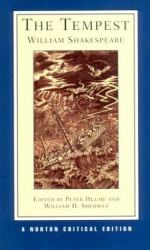|
This section contains 6,610 words (approx. 17 pages at 400 words per page) |

|
While Prospero is clearly the central figure in The Tempest and orchestrates much of its action, the question of whether he should be viewed with sympathy has divided critics. In the nineteenth century, Charles Cowden Clarke contended that Prospero is by nature "a selfish aristocrat" whose rule of the island "stops only short of absolute unmitigated tyranny." Denton J. Snider focused on Prospero more as an allegorical figure, a symbol of "creative Imagination" and a poet, or possibly Shakespeare himself, "grasping and arranging the pure forms of his own poetic art." This view foreshadows many of the critical concerns regarding Prospero in the twentieth century. E. K. Chambers's perception reflects Snider's and that of other biographical commentators who interpret Prospero's surrender of his magic at the end of The Tempest with Shakespeare's farewell to dramatic art. Colin Still's 1921 assessment of the play highlights its allegorical aspects, and...
|
This section contains 6,610 words (approx. 17 pages at 400 words per page) |

|




